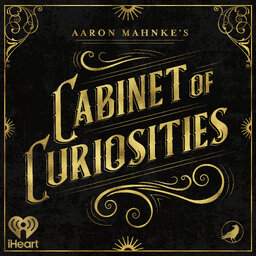Notorious RGB
Famous creatives are more than their finished works. These two curious tales are bound to leave you with a new appreciation for the artwork you love.
Pre-order the official Cabinet of Curiosities book by clicking here today, and get ready to enjoy some curious reading this November!
 Aaron Mahnke's Cabinet of Curiosities
Aaron Mahnke's Cabinet of Curiosities


